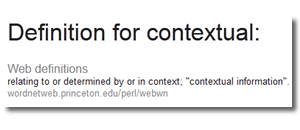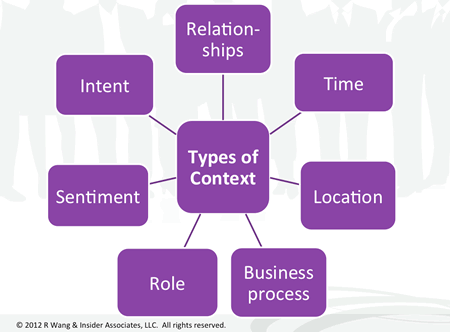 Everything evolves and so does marketing. Today, things evolve faster. The pace of change in the ways we think about marketing goes hand in hand with the pace of technological innovations and mainly their impact on what people do and – as a consequence – how businesses change (or don’t and risk missing a boat they better hadn’t missed).
Everything evolves and so does marketing. Today, things evolve faster. The pace of change in the ways we think about marketing goes hand in hand with the pace of technological innovations and mainly their impact on what people do and – as a consequence – how businesses change (or don’t and risk missing a boat they better hadn’t missed).
Unfortunately, we often forget that the essence never changes: it’s about goals, people and context. The multiple dimensions of contextual relevance and of contextual adaptation – as in transformation – are key in an integrated and customer-centric marketing view, from every possible perspective.
Smart marketers start putting not only their customers first but also the networks of trust and influence of their customers and the customers of their customers. It’s essentially about value chains. That’s nothing new, it’s just more visible and powerful and it’s partially where content marketing comes in. Good content responds to customer needs, preferences, emotions, reasons, purpose and stages and it takes into account contextual relevance, from various angles (time, intent, device, you name it).
The danger of umbrellas and the purpose of marketing
The real way of looking at content marketing has improved the way many marketers nowadays work with content, etc. Just like social media marketing and inbound marketing (and more ubrella terms) it helped stress the fact we should look more at what people want, decision processes, value, influence, sales, brand perception, relevance, customer service and so on. And that as such is a good thing.
The purpose, of course, is not “doing” content marketing, social media marketing, inbound marketing, omnichannel marketing, or whatever terms we have to describe a set of marketing and/or business tactics, strategies and views. The purpose isn’t creating and sharing content neither. It isn’t combining channels such as social media and email. It isn’t getting juicy links. Hell, it isn’t even getting clicks or traffic (and certainly not fans).
 Marketing is about making sure the business makes money, the customer is happy, and the profit goes up – ultimately. To make that happen you use a mix of strategies and tactics, whatever you call them. And you have more intermediate steps and possibilities than ever before to reach those goals, just as people have more choice too.
Marketing is about making sure the business makes money, the customer is happy, and the profit goes up – ultimately. To make that happen you use a mix of strategies and tactics, whatever you call them. And you have more intermediate steps and possibilities than ever before to reach those goals, just as people have more choice too.
Content marketing is great. Inbound marketing rocks. Social media marketing is a must. As long as you use it all for the right reasons (if not, don’t) and in a relevant way to fulfil your goals (and those of your customers): not traffic and fans but the right contacts who want to become your customers when you do a great job. Or regaining the trust so many businesses and marketers have lost. Or finally start listening to what your customers want, sometimes explicitely shouting it out – and acting upon it. Or integrating around the connected customer experience. In fact, everything really.
Customer-centricity is contextual by definition
The fastest route to achieving that is by profoundly understanding what your customers want, how they behave, how they inform themselves, what makes them tick, how their networks (no, not just social or online) influence them, etc. The only reason you want to know that is because you want to make it relevant and remove the obstacles in the buying journey, customer life cycle and different possible online actions, whether it concerns shopping, sharing or seeking service.
That’s customer-centricity. It doesn’t mean you need to be the slave of your customers. It means you have to be smart, excellent and have a very deep understanding of the people that are your market: the customer and what makes him happy or succeed. And most of all the customer experience, across all touchpoints. It means putting customers first (and do define customers in a very broad sense) and, indeed, looking at the context.
Ray Wang wrote about context from an engagement strategy perspective, emphasizing the need to move to right time right everything, the mantra in so many business areas now. Ray defined seven dimensions of context drivers and there are probably more.

A customer-centric marketer by definition is a ‘contextual marketer’. Look at all the touchpoints. Look at the channels people use, the environment, they use them in, what content they need in which stage of their life cycle, emotions, whatever. You need to move towards that single view.
Context matters a lot. People are at the center of all efficient marketing. That’s why good marketing is by default integrated and focused on improving touchpoints in an integrated way. The customer is one, understanding the context within which he moves, lives, buys and shares is essential, regardless of when, where and how.
Look at your customer’s context first. This is how good marketing has always been done. Behavior, preferences, intentions, business goals, needs, triggers, life cycle stages, user experiences, psychographics, screens, preferred information channels, networks of influence and much more, it all matters and is connected.

